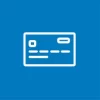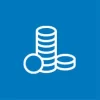Independent online comparison service moneyland.ch conducted a representative survey which reveals how frequently consumers in Switzerland use different payment methods for brick-and-mortar and online purchases. Participants were also asked to rate their willingness to forego different payment methods.
A total of 1500 residents between the ages of 18 and 74 across German-speaking and French-speaking Switzerland took part in the survey. The moneyland.ch survey is one of a series of Swiss payments surveys conducted by moneyland.ch, including a one conducted one year ago, just ahead of the coronavirus crisis.
The results of the survey: “For the first time, Swiss consumers do not consider cash to be the most important payment method,” says Benjamin Manz, CEO of independent online comparison service moneyland.ch. Debit cards and credit cards are considered more essential. Compared to consumer habits before the coronavirus crisis, contactless payments and mobile payments have increased. Twint has experienced its highest-growth period since the dawn of the coronavirus crisis.
“moneyland.ch expects that cash will continue to lose in importance,” says Manz. The trend towards contact-free payments will likely continue past the coronavirus crisis. Mobile payments in particular are on the increase.
Debit cards and credit cards are most essential for consumers
moneyland.ch asked survey participants which payment methods they consider to be the most essential. Participants answered the question by rating their willingness to forego each payment method on a scale of 1 (I do not use this payment method) to 10 (This payment method is indispensable for me). The payment methods which participants collectively considered to be the most essential received the highest ratings.
The results: For the first time, cash did not take first place as the most essential payment method. Debit cards took first place at 73%, followed by credit cards with 71%. Cash follows in third place, with 67% of consumers finding cash indispensable in 2021 – compared to 78% a year ago.
53% of consumers find Maestro debit cards indispensable, while 43% of consumers find Twint indispensable. Before the coronavirus crisis, only 26% of consumers found Twint essential. “The coronavirus crisis has turned Twint into a serious payment method for many users,” says Benjamin Manz.
25% of consumers find the PostFinance debit card indispensable. 20% find prepaid cards indispensable. 18% find Visa debit cards including V Pay debit cards essential. 18% find the Debit Mastercard essential. Apple Pay (7%), Google Pay (5%), Samsung pay (4%) and bitcoin (3%) remain largely dispensable. Wristwatch-based payments (4%) are also irrelevant for most consumers.
You can find graphic outlining Swiss payment preferences here.
How Swiss pay at brick-and-mortar merchants
Survey participants were asked how often they use different payment methods when making purchases from brick-and-mortar merchants. For each payment method, participants selected whether they used that means of payment: for every purchase; daily; several times per week; once per week; several times per month; once per month; several times per year; or never. Answers were then categorized as rare use (once a year), occasional use (once per month, several times per month, once per week), and frequent use (several times per week, daily, for every purchase).
Cash is the most used payment method in Switzerland for purchases at brick-and-mortar merchants. In total, 98% of residents use cash to pay for physical purchases. 17% use cash rarely, 47% use cash occasionally, and 34% use cash frequently.
Debit cards (Maestro, Debit Mastercard, PostFinance Card, Visa Debit, V Pay) are used for physical purchases by 91% of residents. 10% use debit cards rarely, 24% use debit cards occasionally, and 57% use debit cards frequently.
Credit cards are used at brick-and-mortar merchants by 84% of residents. 18% of residents rarely use credit cards, 32% use them occasionally, and 34% use them frequently.
Debit cards are, by a wide margin, the most frequently used payment method, followed by cash and credit cards.
You can find a graphic outlining Swiss payment preferences for physical purchases here.
NFC-based payment transactions on the rise in Switzerland
Contact-free payments have increased again compared to before the coronavirus crisis. 62% of participants in the latest survey use NFC when making physical purchases using credit cards (with varying frequency). To put that in perspective, a total of 84% of participants use credit cards to pay for physical purchases. That means nearly three-quarters of credit card users in Switzerland make contactless payments with their credit cards.
51% of residents make NFC-based payments with Maestro cards. Formulated differently: around a third of Maestro card users in Switzerland make contactless payments. 80% of Revolut users make contactless payments.
Mobile payments are becoming more popular
Using mobile apps to make payments is becoming more popular. Twint is the most widely used mobile payment solution: 48% of participants use Twint to as a payment method for physical purchases. 12% use Twint rarely, 27% use it occasionally, and 9% use it frequently.
Apple Pay is the next most popular – but by a wide gap. 12% of consumers use Apple Pay. 4% use it rarely, 5% occasionally and 3% frequently. Google Pay (9%) and Samsung Pay (7%) take third and fourth place, respectively.
Smart watches are hardly used for payments. Garmin Pay, Fitbit Pay, and Swatch Pay are each used by just 2% of residents. Bitcoin is used by just 5% of residents.
How Swiss pay online
Online shopping has become more popular since the start of the coronavirus crisis. The moneyland.ch Swiss Payments Survey collected information about how residents pay online.
Credit cards remain the most popular payment method for online purchases, with 88% of survey participants using this payment method. 23% use credit cards for online purchases rarely, 51% use them occasionally, and 14% use them frequently. Payment by billing is the second most widely used means of paying for online purchases, with 84% of residents paying for online purchases via billing. 34% use billing rarely, 45% use it occasionally, and 5% frequently pay for online purchases by billing.
Payment in advance via bank transfer is the third most popular payment method for online purchases, with 51% of residents paying this way. This is followed by PayPal (46%), Twint (43%) and the PostFinance debit card (27%). Bitcoin is used by 5% and other cryptocurrencies by 4% of residents for online payments.
You can find a graphic outlining Swiss payment preferences for online purchases here.
Women and men pay differently
Gender-based differences in payment methods used are most apparent with regards to new payment technologies. Men use mobile payments, NFC payments, Revolut, bitcoin and altcoins significantly more frequently than women.
UK neobank Revolut is one example of this. 16% of men use Revolut, compare to 8% of women. 35% of women use mobile payments, compared to 44% of men (with varying frequency). Only 3% of women use bitcoin as a means of payment, compared to 6% of men.
Young people are more likely to use prepaid cards, Twint and mobile payments
Age-based differences in payment behavior are also notable. Dependence on prepaid cards, Twint, Apple Pay and mobile payments steadily decreases with age, while the importance of cash increases with age.
Prepaid cards are a good example: 46% of adults between the ages of 18- and 25-years old use prepaid cards to pay in brick-and-mortar stores (with varying frequency). A lower 25% of adults between the ages of 26 and 49 use prepaid cards, and only 17% of adults between the ages of 50- and 74-years old use prepaid cards.
Apple Pay is another example: 17% of adults aged 18 to 25 use Apple Pay to pay for physical purchases (with varying frequency), compare to 13% of adults aged 26 to 49 and 8% of adults aged 50 to 74.
Revolut is surprisingly popular amount young adults
A significant 21% of participants between the ages of 18 and 25 use the Revolut card to pay at brick-and-mortar merchants (with varying frequency). That is high compared to the 16% of adults between the ages of 26 and 49, and the 5% of adults between the ages of 50 and 74 who use Revolut. “The fact that foreign neobank Revolut is already so widely used by young adults in particular should be a cause for concern among Swiss banks,” says Benjamin Manz. Revolut’s popularity can largely be traced to the simplicity of processes, the usability of its app, and its low fees.
Twint has established itself during the coronavirus crisis
The biggest development revealed by the survey is the broad adoption of Twint as a payment method during the coronavirus crisis. In January 2020, 36% of residents used Twint, with varying frequency, to pay at stores. Today, 48% of residents use Twint to pay for some physical purchases. Around half of adults between the ages of 18- and 74-years old use Twint for payments. 12% use it rarely, 27% occasionally, and 9% frequently.
43% of survey participants – a substantial amount – now find Twint essential. By comparison, only 7% find Apple Pay essential.
Twint is especially popular amount young adults. 67% of adults between the ages of 18 and 25 years old find Twint essential, compared to 51% of adults aged 26 to 49.
70% of 18- to 25-year-old adults already use Twint to pay for brick-and-mortar purchases (with varying frequency), compared to 55% of adults aged 26 to 49 and 32% of adults aged 50 to 74 years old.
More on this topic:
Compare Swiss credit cards now
Compare Swiss debit cards and private accounts now







